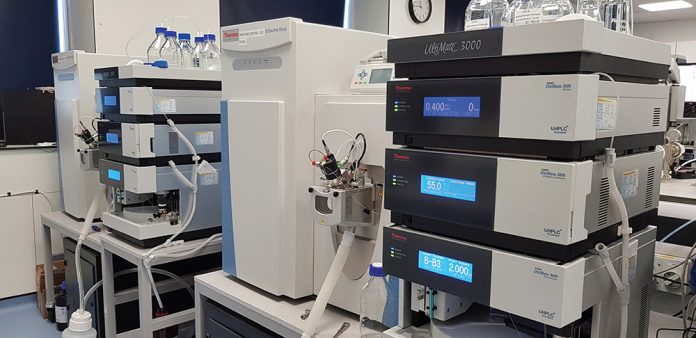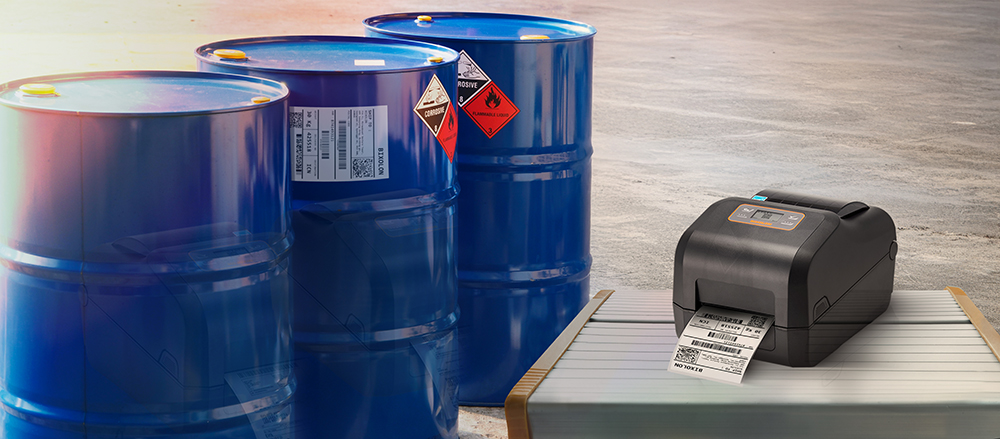Mounting pressures across the globe to allow more cost-effective, higher throughput, non-vertebrate chemical safety testing are at last bringing much needed change. The US Environmental Protection Agency has made commitments to reduce vertebrate animal testing, and in 2021 the European Parliament adopted a Resolution calling on the European Commission to establish an EU-wide Action Plan for the active phase-out of the use of animals in experiments.
University of Birmingham spinout, Michabo Health Science Ltd, talks to Chemical Industry Journal about its novel work to accelerate the safety assessments of industrial chemicals. The company’s founders, Professor Mark Viant, Chair of Metabolomics, and Professor John Colbourne, Chair of Environmental Genomics have specialised for two decades in developing novel laboratory and computational methods to deliver higher throughput precision toxicity testing.
Michabo Health Science focuses on supporting the regulation of groups of chemicals, thereby reducing the costs associated with vertebrate animal testing – and speeding up risk assessment for new and existing chemicals.
Failed risk assessments
“Grouping and read-across” is the most widely used non-animal testing method for industrial chemicals in Europe. It is based upon having toxicity data for one chemical (the source substance) that can be copied across to predict the toxicity of the chemical that is being risk assessed (the target substance). To do this reliably, however, the two chemicals must be categorised as belonging to the same group; the scientific justification for this is called the “grouping hypothesis”.
Conventionally, forming a group has been attempted by comparing the chemicals’ physico-chemical properties and/or structures, and if they are similar enough, then the toxicity data can be read across from the source to the target.
Yet regulators currently reject the majority of industry’s risk assessment dossiers, and commonly cite lack of confidence in the ‘grouping hypothesis’ as a reason for rejection1.
However, complementing conventional grouping with grouping based on biological response data, which provides molecular information of the mode(s) of action (MoA) of chemicals, can significantly increase confidence in the grouping hypothesis2,3.
Biological response data
The team at Michabo Health Science has been working with chemical regulators since 2018 to develop a procedure to incorporate molecular data into chemical grouping. This New Approach Methodology (NAM) uses laboratory and computational methods developed over the last decade by researchers from the University of Birmingham’s School of Biosciences.
NAMs are methods that bring greater robustness, throughput and mechanistic knowledge into risk assessment, and enable more relevant decision making for human health and the environment, and the European Chemicals Agency (ECHA)’s ECHA’s Director of Hazard Assessment has recently commented positively on the conceptual progress being made in NAMs for regulatory chemical risk assessment4.
Central to the company’s NAMs are ‘omics’ technologies, which measure thousands of molecular responses to chemical exposure, coupled with data interpretation procedures to analyse the molecular data to group chemicals and predict their potential hazards.
Omics technologies were developed over 20 years ago and have become a central pillar of biomedical research and more recently for medical diagnostics. Deployed in chemical safety science, they can also measure a broad range of molecular responses of a biological test system to chemical exposure.
The NAMs employed by Michabo Health Science include transcriptomics – which measure how thousands of genes in a cell, tissue or organism respond, providing information on the ‘upstream’ parts of a chemical’s mode-of-action. Michabo also uses metabolomics, which characterise how thousands of small-molecule metabolites involved in biochemical processes respond to chemical exposure, providing information on the ‘downstream’ MoA, which is closer to traditional measures of adversity.
New chemical groupings
The company’s approach to forming chemical groups involves quantitatively comparing these ‘molecular fingerprints’ from omics technologies and putting chemicals with similar molecular fingerprints into the same group. This is conceptually like the widely used approaches for comparing structural fingerprints, such as Tanimoto similarity, that can be used to put structurally similar chemicals into groups.
Working with chemical regulators, the company has demonstrated the new approach in a case study to predict the toxicity of an azo dyes. By applying omics technologies and in-house data analysis tools, the team quantitatively determined the optimal source substance from 6 possible azo dyes – to read-across its toxicity data to the target azo dye.
Advances in chemical grouping is a key part of the new 20 million Euro PrecisionTox project, led by Professor Colbourne at the University of Birmingham, which focuses on the development of new testing strategies for next generation risk assessment5. Lying at the heart of PrecisionTox is the application of both transcriptomics and metabolomics technologies for assessing the effects of chemicals across several non-animal test systems.
Michabo Health Science is one of 13 partners in PrecisionTox, providing expertise in omics-based chemical grouping, and tasked with conducting further case studies and developing guidance documents for the chemical industry.
Professor Colbourne comments: “There are simply too many chemicals to assess using traditional methods, and grouping will reduce both the time and number of animals needed for chemical assessment.
Professor Viant added: “We are particularly excited that the PrecisionTox project includes lawyers, economists and scientists, we need to consider the deployment of omics-based grouping from all angles and to ensure it’s a win for all stakeholders.”
The way forward
Michabo Health Science is working with both industry and regulators to define where the chemical groupings using NAMs sit within the regulatory process.
The value of omics technologies has recently been recognised by the Organisation for Economic Cooperation and Development (OECD)’s Chemical Safety and Biosafety Programme. The OECD describes several applications of omics technologies to chemical safety6, and published a draft Omics Reporting Framework in 20217, which is intended to help the chemical industry report their omics data to chemical regulators.
Details at michabo.co.uk.
References:
1 Fourth report under Article 117(3) of the REACH Regulation. https://echa.europa.eu/documents/10162/0/alternatives_test_animals_2020_en.pdf/db66b8a3-00af-6856-ef96-5ccc5ae11026. Accessed at 22.3.22.
2 Integrative Chemical-Biological Read-Across Approach for Chemical Hazard Classification. DOI: 10.1021/tx400110f
3Toward Good Read-Across Practice (GRAP) guidance. DOI: 10.14573/altex.1601251
4 https://chemicalwatch.com/374408/echa-hazard-chief-happy-with-conceptual-progress-on-nams. Accessed at 22.3.22
5 https://precisiontox.org/. Accessed at 22.3.22
6 https://www.oecd.org/chemicalsafety/testing/omics.htm. Accessed at 22.3.22
8 Progress towards an OECD reporting framework for transcriptomics and metabolomics in regulatory toxicology. DOI: 10.1016/j.yrtph.2021.105020










